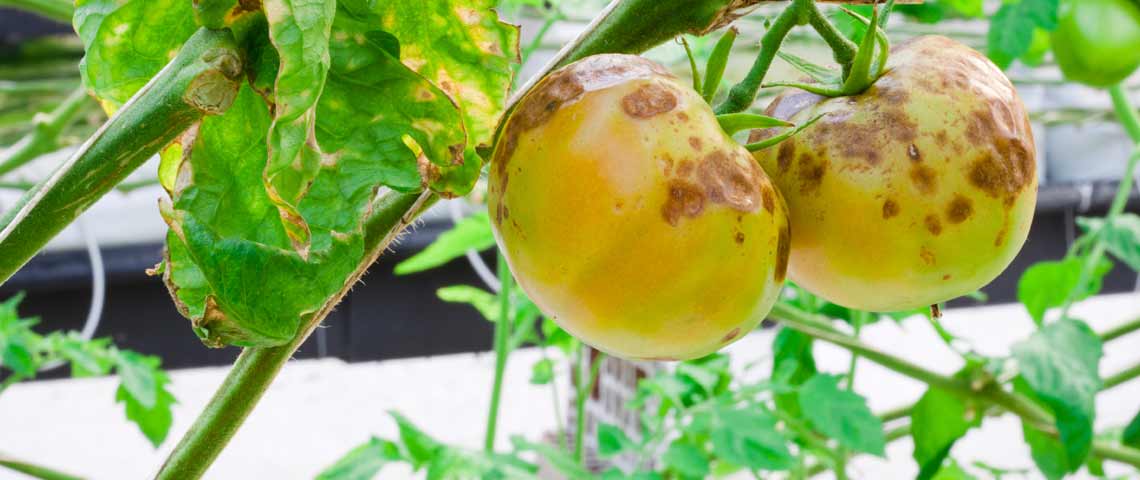It’s likely that part of the reason you wanted to grow your own produce was to avoid the pesticides that are found at the grocery store. Sure, those pesticides might get rid of any fungus or disease, but it’s proven to be unhealthy for our bodies. Instead, use these 5 natural ways to keep fungus at bay in your garden.
1. Trim affected leaves and plants.
The minute you see a leaf affected by what appears to be a fungus, cut the leaf at the base of the stem. If the entire plant seems affected, you may have to remove the entire plant.
Do not throw the affected leaves or vines in the compost heap. Either burn the leaves or place them in a plastic garbage bag and throw them out with the garbage.
2. Hydrogen peroxide.
Add one ounce of hydrogen peroxide to nine ounces of water, and pour the solution into a spray bottle. After removing any affected leaves, spray the surrounding plants and the affected plant with a liberal, misting spray of the solution. The hydrogen peroxide will kill and prevent further fungal growth. If you’re a bit squeamish about applying hydrogen peroxide to your fruits or vegetables, then you can use this approach on flowers and other decorative plants and use the next approach for your vegetable garden.
After any rain, you likely should reapply the solution.
3. Acetic acid.
Acetic acid is vinegar. Most store-bought vinegar has a 4 to 5 percent solution of acetic acid.
Vinegar is, in fact, a highly powerful, natural antiseptic. Combine the vinegar with an equal measure of water and put into a plastic spray bottle. Some people prefer the vinegar approach to hydrogen peroxide, but you can apply both to your plants if you want a little extra insurance.
I prefer this approach for vegetables and fruits. It’s easy to rinse off the vinegar before eating any fruit or vegetable. Reapply after a rain.
4. Baking soda.
Combine one quart of water with one teaspoon of baking soda. Add a half teaspoon of canola oil and a splash of dish soap and shake the bottle. Apply the same way as either the hydrogen peroxide treatment or the vinegar treatment.
One note: If you apply the vinegar solution to your leaves immediately followed by the baking soda solution, you may see some foaming. I’ve done this intentionally a couple of times to see if it was more effective, but there was nothing to indicate the combination was better than either one individually.
5. Change your garden location.
The simple fact is that a fungus doesn’t like bright sun. It prefers the cool shade of trees or other plants to grow and spread. Your garden location will be somewhat protected from fungus if it’s in full sun all day.
Have you tried any of these natural ways to fight fungus in your garden? Do you use any other methods?
Article Source: Off The Grid News

What’s this?
You cure that with Fire.
Randy Eckert